 W
WAalsmeer Flower Auction is a flower auction that takes place in Aalsmeer, Netherlands. It is the largest flower auction in the world. The Aalsmeer Flower Auction building is the fourth largest building by footprint in the world, covering 518,000 square metres. Flowers from all over the world – Europe, Ecuador, Colombia, Ethiopia, Kenya, and other countries—are traded every day in this gigantic building. Around 20 million flowers are sold daily. This increases by around 15 percent around special days such as Valentine's Day and Mother's Day. Their flowers are subjected to around 30 quality checks so that they can be graded on a scale.
 W
WPatrick Barry, was a pioneer horticulturist, owner of the then-largest nursery in the United States, and noted author on the subject of horticulture.
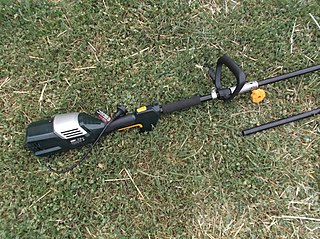 W
WA brushcutter is a powered garden or agricultural tool used to trim weeds, small trees, and other foliage not accessible by a lawn mower or rotary mower. Various blades or trimmer heads can be attached to the machine for specific applications.
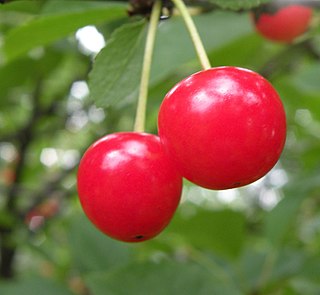 W
WCherry production in Michigan is a major part of the agriculture industry in the state. Harvesting over 90,000 tons of cherries each year, Michigan is the nation's leading producer of tart cherries. The Montmorency cherry is the variety of tart, or sour, cherry most commonly grown in the state. A Hungarian sour cherry cultivar, Balaton, has been commercially produced in Michigan since 1998.
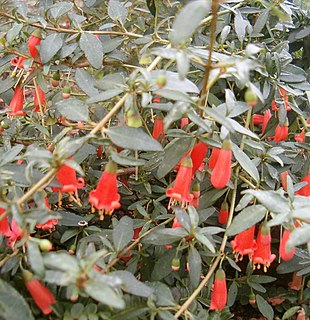 W
WThe Clapton Nursery also known as Mackay's Clapton Nursery and later Low's Clapton Nursery was a plant nursery established in the early 19th century by John Bain Mackay in Upper Clapton, London, and noted for its introductions of Australian and South American plants into cultivation.
 W
WIn agriculture and gardening, a cloche is a covering for protecting plants from cold temperatures. The original form of a cloche is a bell-shaped glass cover that is placed over an individual plant; modern cloches are usually made from plastic. The use of cloches is traced back to market gardens in 19th century France, where entire fields of plants would be protected with cloches. In commercial growing, cloches have largely been replaced by row cover, and nowadays are mainly found in smaller gardens.
 W
WConcrete landscape curbing is an alternative to plastic or metal landscape edging. Landscape curbing is made with various elements of concrete depending on the climate where it is being used. Concrete landscape curbing has become more popular over the last decade with suppliers offering a variety of styling options.
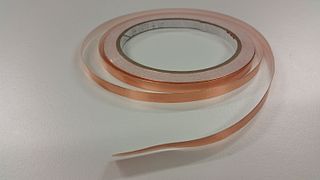 W
WCopper tape refers to a thin strip of copper, often backed with adhesive. Copper tape can be found at most hardware and gardening stores and sometimes electronic stores. Copper tape is used to keep slugs and snails out of certain areas in gardens, potted plants, and trunks of fruit trees, and other trees and shrubs. It is also used for other applications, such as electromagnetic shielding or low-profile surface mount transmission line in electronics and in the production of tiffany lamps. It comes in two forms; conductive adhesive and non-conductive adhesive.
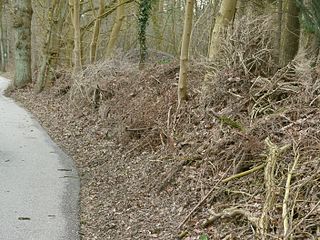 W
WA dead hedge is a barrier constructed from cut branches, saplings, and foliage. The material can be from pruning, clearing, or forestry activities. Their succession is a beetle bank or hedge.
 W
WThe Delaware Center for Horticulture (DCH) cultivates greener communities by inspiring appreciation and improvement of the environment through horticulture, education and conservation. Founded in 1977, the Center's headquarters in Wilmington's Trolley Square is an oasis in the city. The venue hosts many weddings and corporate events and includes a public demonstration garden that backs up to Brandywine Park, an art gallery, lecture hall, and a greenhouse. The DCH plants thousands of trees and leads regional projects to enhance Delaware's urban forests; supports community gardens, urban farms, and school gardens; organizes city park improvement projects; beautifies Delaware's roadsides with native vegetation; maintains the landscaping of many traffic medians and streetscapes; and provides educational programs for families and adults. Members of The DCH and more than 700 active volunteers come from Delaware and the surrounding region.
 W
WDouble digging is a gardening technique used to increase soil drainage and aeration. It involves the loosening of two layers of soil, and the addition of organic matter.
 W
WFlat beans, also known as helda beans, romano beans and "sem fhali" in some Indian states, are a variety of Phaseolus coccineus, known as runner bean with edible pods that have a characteristic wide and flat shape. Flat beans are normally cooked and served as the whole pods, the same way as other green beans. Like many other types of bean they can also be dehusked or shelled and the whitish seeds dried and stored, but there is no incentive to grow them for this purpose as higher-yielding bean varieties are available.
 W
WFlower Forest Botanical Gardens is a horticultural park and tourist attraction near the village of Bloomsbury, Saint Joseph in Barbados. It is a scenic garden park with attractive flowering plants and tropical trees. The 50-acre (200,000 m2) property was formerly a sugar plantation.
 W
WWilliam Forsyth was a Scottish botanist. He was a royal head gardener and a founding member of the Royal Horticultural Society. A genus of flowering plants, Forsythia, is named in his honour.
 W
WThe Gardener's Magazine was the first British periodical devoted to horticulture. Full title was The gardener's magazine and register of rural & domestic improvement. It was written, edited and published by John Claudius Loudon starting in 1826. It was initially published quarterly, increased its frequency to bi-monthly and then monthly. The publisher was Longman, Rees, Orme, Brown and Green, and the magazine was based in London. It ceased publication in 1844.
 W
WGreen Zebra is a tomato cultivar with characteristic dark green and yellow stripes. Newer variations blush reddish instead of yellow when ripe. It is more tart than a regular tomato, and it is an early cultivar. Compared to other tomato varieties, it can produce somewhat mealy fruits depending on growing conditions.
 W
WPippa Greenwood is an English plant pathologist. She appears frequently on the BBC's long running Gardeners' World television programme and has been a regular panellist on Gardeners' Question Time on BBC Radio 4 since 1994. She also was the gardening consultant on the ITV series Rosemary and Thyme in 2003–2006.
 W
WA growbag is a large plastic bag filled with a growing medium and used for growing plants, usually tomatoes or other salad crops. The growing medium is usually based on a soilless organic material such as peat, coir, composted green waste, composted bark or composted wood chips, or a mixture of these. Various nutrients are added, sufficient for one season's growing, so frequently only planting and watering are required of the end-user. Planting is undertaken by first laying the bag flat on the floor or bench of the growing area, then cutting access holes in the uppermost surface, into which the plants are inserted.
 W
WPeta "Bunny" Guinness is a chartered landscape architect, journalist and radio personality who is a regular panellist on the long running BBC Radio 4 programme, Gardener's Question Time. She also writes a weekly column in the Sunday Telegraph. She presented The Great Garden Challenge on Channel 4 in 2005.
 W
WHillier Nurseries is a horticultural business which was founded by Edwin Hillier in 1864 as a florist and plant nursery. It expanded as a family business, especially when managed by grandson Harold Hillier, and is now the largest nursery of shrubs and trees in the UK.
 W
WHortus Bulborum is a Dutch foundation that conserves historic cultivars of spring flowering bulb- and tuber crops. The collection garden of the foundation is located at the Zuidkerkenlaan in Limmen, Noord-Holland, Netherlands, near the historic city of Alkmaar.
 W
WThe Incredible Edible project is an urban gardening project which was started in 2008 by Pamela Warhurst, Mary Clear and a group of like minded people in Todmorden, West Yorkshire, UK. The project aims to bring people together through actions around local food, helping to change behaviour towards the environment and to build a kinder and more resilient world. In some cases, it also envisions to have the groups become self-sufficient in food production, hence having all food being produced locally.
 W
WKazuyuki Ishihara is a Japanese garden designer who has won many gold medals at the Chelsea Flower Show. His design for 2019 is an artisan garden, "Green Switch", whose theme is switching from the urban environment to a natural one. It is planted with horsetail, iris, maple, moss, pine, watercress and features two waterfalls and a Japanese tea room.
 W
WJames Pulham and Son was a firm of Victorian landscape gardeners and terracotta manufacturers which exhibited and won medals at London's Great Exhibition of 1851 and 1862 International Exhibition.
 W
WLandscape contracting is: "a profession that involves the art and technology of landscape and garden project planning, construction and landscape management, and maintenance and gardening; for garden aesthetics, human enjoyment and safety, and ecosystem-plant community sustainability."
 W
WA Leaf Spot is a limited, discoloured, diseased area of a leaf that is caused by fungal, bacterial or viral plant diseases, or by injuries from nematodes, insects, environmental factors, toxicity or herbicides. These discoloured spots or lesions often have a centre of necrosis or cell death. Symptoms can overlap across causal agents, however differing signs and symptoms of certain pathogens can lead to the diagnosis of the type of leaf spot disease. Prolonged wet and humid conditions promote leaf spot disease and most pathogens are spread by wind, splashing rain or irrigation that carry the disease to other leaves.
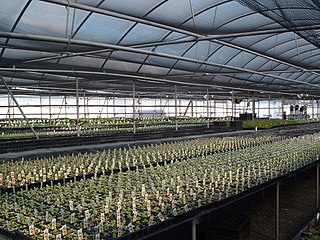 W
W"Liners" is a horticultural term referring to trays of very young plants, usually grown for sale to retailers or wholesalers, who then grow them to a larger size before selling them to consumers. Liners are usually grown from seed, but may also be grown from cuttings or tissue culture. They are grown in plastic trays with many "cells," each of which contains a single liner plant. Liners will typically range in size from a 36 cell tray up to a 288 cell tray. The most common size used in commercial nurseries is between 50 and 72 cells. The term "liner", is typically used for perennial, ornamental, and woody seedlings. Annuals in this form are usually referred to as plugs.
 W
WThe Longsheng Rice Terraces, also called the Longji Rice Terraces, are located in the town of Longji in Longsheng Various Nationalities Autonomous County, about 100 kilometres (62 mi) from Guilin, China.
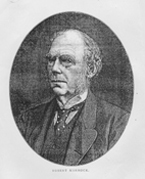 W
WRobert Marnock (1800–1889) was one of the outstanding English horticulturalists and garden designers of the 19th century. He was considered by his contemporaries to be the best exponent of the Gardenesque school of landscape gardening.
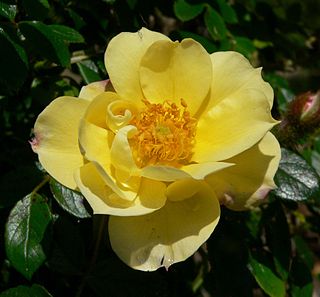 W
WRalph S. Moore was a rose breeder and discoverer born to Orlando Moore in Visalia, California.
 W
WMr. Stripey is a type of heirloom tomato with unusually small leaves and a mix of a yellow and red color that can fool some growers into thinking they are picking an unripe tomato. Under good conditions in size, shape and internal structure it may be considered a "beefsteak".Tigerella is generally smaller than the Mr Stripey variety and the colors are less defined, they actually are two distinct different heirloom varieties. Tigerella isn't as sweet or "low-acid" as the Mr Stripey variety either. Like other heirlooms, Mr. Stripey has an appearance that differs considerably from other tomatoes. In coloration it is generally somewhat more yellow near the stem and more red towards its underside, with gentle stripes of red and yellow blending into each other along the sides. This coloration may extend into the interior of the fruit, which tends to be more yellow than red.
 W
WThe National Horticultural Society of France is a horticultural society founded in 1827 by Louis-Étienne Héricart de Thury. Headquartered in Paris, it comprises specialized departments which organize conferences, themed journeys and garden visits, and exhibitions.
 W
WNotcutts Garden Centres Ltd. is a private limited company. The family-owned group operates 18 individual garden centres across England. Notcutts also owns one of the UK's largest rose specialists (Mattocks).
 W
WNuMex is the moniker used for products created by the Agriculture Experimentation Station of New Mexico State University.
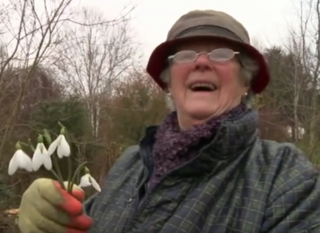 W
WMargaret McAllister Owen was a British farmer, gardener and heritage activist.
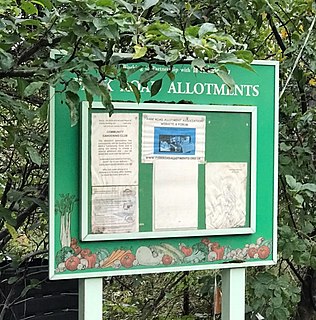 W
WPark Road Allotments are allotments in Old Isleworth. They were managed by the local council who rented the land from the estate of the Duke of Northumberland. The allotments are recognised as an asset of community value but, in 2015 when the 100-year lease expired, they were threatened by redevelopment by the Duke, who proposed to build flats and houses upon the site while providing allotment space in nearby Syon Park. These plans were opposed by local parties such as the Isleworth Society and, on 20 June 2017, the planning committee of Hounslow council rejected them. The matter was then appealed and a public inquiry started on 9 October 2018.
 W
WPlantlets are young or small clones, produced on the leaf margins or the aerial stems of another plant. Many plants such as spider plants naturally create stolons with plantlets on the ends as a form of asexual reproduction. Vegetative propagules or clippings of mature plants may form plantlets. An example is mother of thousands. Many plants reproduce by throwing out long shoots or runners that can grow into new plants. Mother of thousands appears to have lost the ability to reproduce sexually and make seeds, but transferred at least part of the embryo-making process to the leaves to make plantlets.
 W
WPotato leaf (PL) is one of two major types of leaves which tomato plants exhibit. The other type is referred to as "regular leaf" (RL). Simply stated, potato leaf tomato plants have a smooth leaf edge when compared with the serrated edge of the regular leaf. The shape is oval and may feature notches separating large lobes. Its color is dark green.
 W
WReykjavík Botanic Garden is a botanical garden located in the district of Laugardalur in Reykjavík that was established on August 18, 1961 on the 175th anniversary of the city.
 W
WRhubarb forcers are bell shaped pots with a lid covered opening at the top. Used to cover rhubarb to limit photosynthesis, they encourage the plant to grow early in the season and also to produce blanched stems. The pots are placed over two- to three-year-old rhubarb crowns during winter or very early spring. Once shoots appear the lid is taken off, causing them to grow towards the light.
 W
WRing culture is a method of cultivating tomato plants. Tomato plants are grown in a bottomless pot, a "ring", and the pot is partially submerged in a tray of water. It is perhaps best described as Two Zone Culture. The gardener aims to have one layer or zone of roots in a container and a second layer or zone of roots in some permeable material like gravel, sand or coarse ashes below. Ring culture forces the plants to develop two root systems: one which will absorb the nutrients contained in the soil and another which will absorb the water from the tray. It enables a gardener to grow an excellent group of tomatoes in shallow soil. It is used in greenhouses largely for tomatoes and enables a heavy crop to be grown above, for instance, a gravel path or an ash bed.
 W
WA root ball is the main mass of roots at the base of a plant such as a shrub or tree. It is of particular significance in horticulture when plants are repotted or planted out in the ground. The quality and preparation of the root ball will determine how well the plant will survive this transplantation and then flourish in its new situation.
 W
WA seed germinator is a device for germinating seeds. Typically, these create an environment in which light, humidity and temperature are controlled to provide optimum conditions for the germination of seeds.
 W
WAdolph Strauch was a renowned landscape architect born in Silesia, Prussia, known particularly for his layout designs of cemeteries like Spring Grove Cemetery in Cincinnati, Ohio, Forest Lawn in Buffalo, NY and Oak Woods Cemetery in Chicago, Illinois. Strauch also laid out many parks in Cincinnati, Ohio, including Eden Park, Burnet Woods and Lincoln Park. Strauch was hired by Spring Grove Cemetery in 1855 to handle the landscaping, and became superintendent of the place by 1859. He also designed Greenwood Cemetery.
 W
WSubsoil is the layer of soil under the topsoil on the surface of the ground. Like topsoil, it is composed of a variable mixture of small particles such as sand, silt and clay, but with a much lower percentage of organic matter and humus.
 W
WAnne Swithinbank is a trained horticulturist, freelance gardening broadcaster and writer. She trained at the Royal Botanical Gardens, Kew Gardens and was Glasshouse Supervisor at the Royal Hortcultural Society's garden at Wisley, Surrey.
 W
WIn lawn care, thatch is a layer of organic matter that accumulates on a lawn around the base of the grass plants. Thatch is a combination of living and dead plant matter including crowns, stolons, rhizomes, and roots. Grass clippings do not generally contribute to thatch buildup as they can be easily broken down by soil microorganisms. Thatch is composed of about 25% lignin, a complex organic polymer that is highly resistant to decomposition.
 W
WTigerella is a bi-colored tomato cultivar, relatively small, 2 to 4 ounces, and early. Upon maturity the fruit is red with yellow stripes, essentially the same as Green Zebra, except that the fruit is red instead of green, and has a sweeter flavor. The colour occasionally varies, in New Zealand for instance, commercially produced Tigerella is dark crimson red with very dark green stripes.
 W
WTropical horticulture is a branch of horticulture that studies and cultivates plants in the tropics, i.e., the equatorial regions of the world. The field is sometimes known by the portmanteau "TropHort".
 W
WArthur Veitch was one of a long line of horticulturists who established the renowned family business Veitch Nurseries.
 W
WThe Washington Native Plant Society (WNPS) is a non-profit organization dedicated to the protection and appreciation of the native plants of the U.S. state of Washington. The society advocates for the protection of species, their habitats, and general environmental quality. WNPS also works in cooperation with other non-profit groups, such as the Seattle Audubon Society on public education and advocacy efforts.